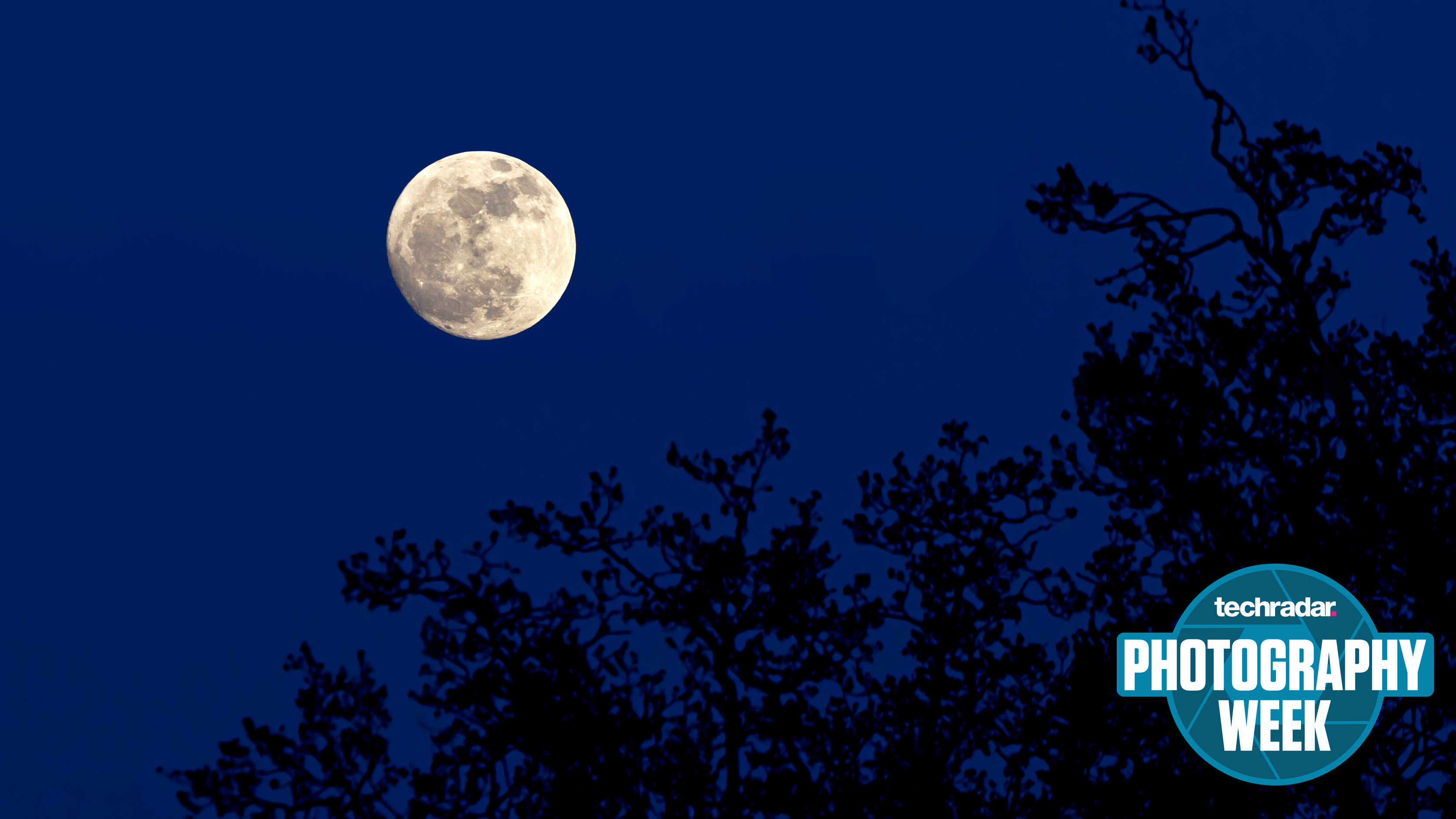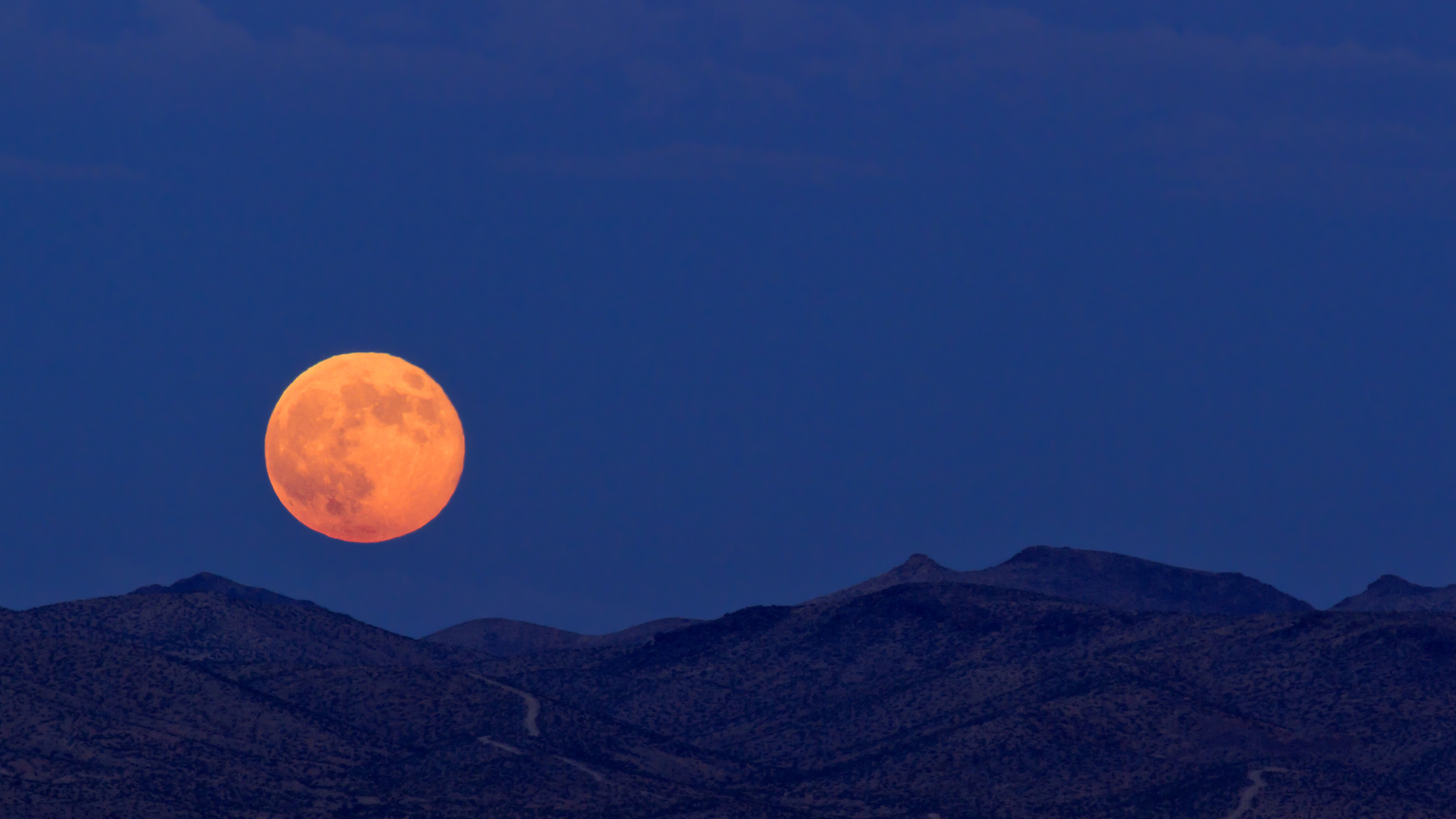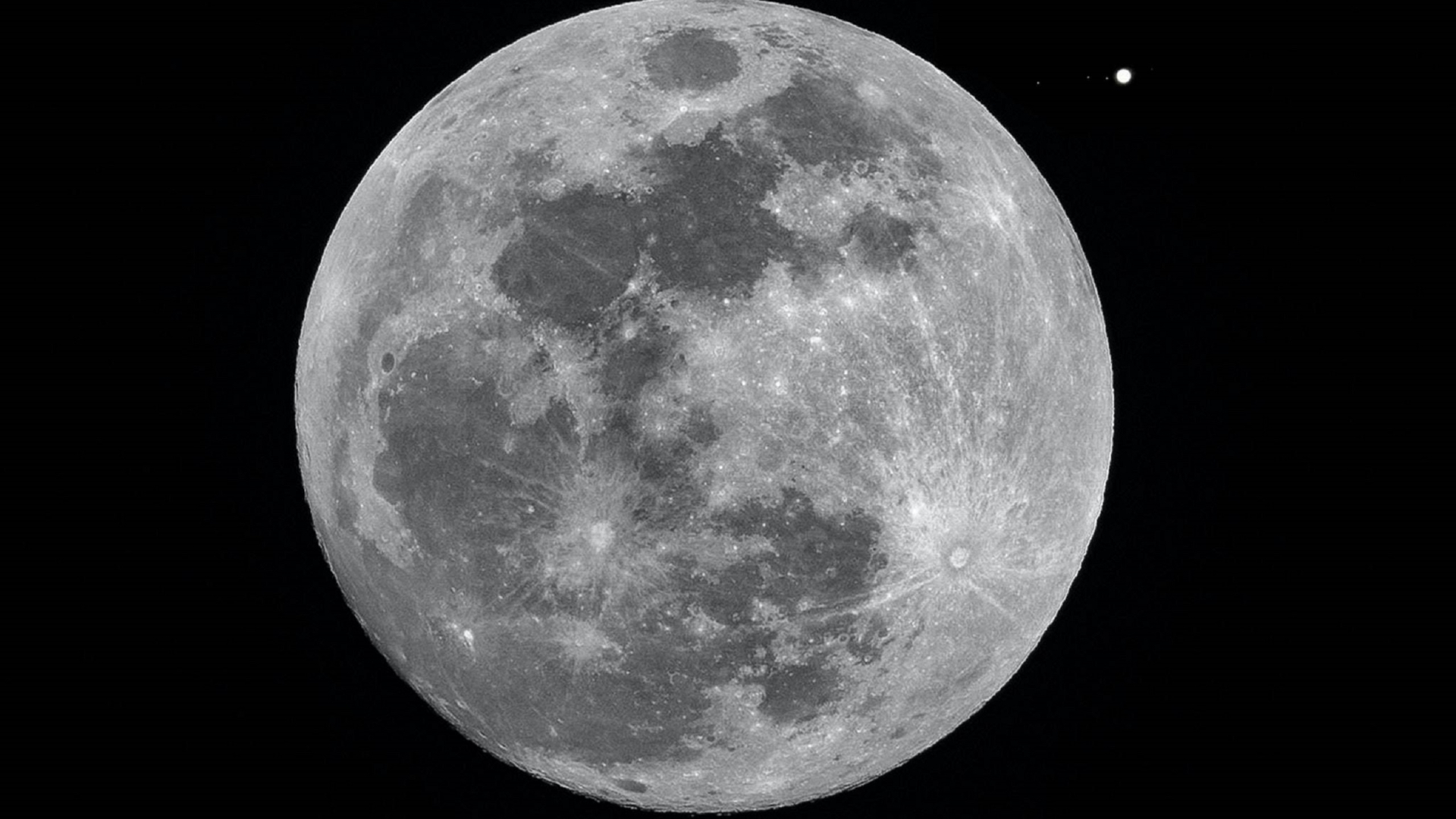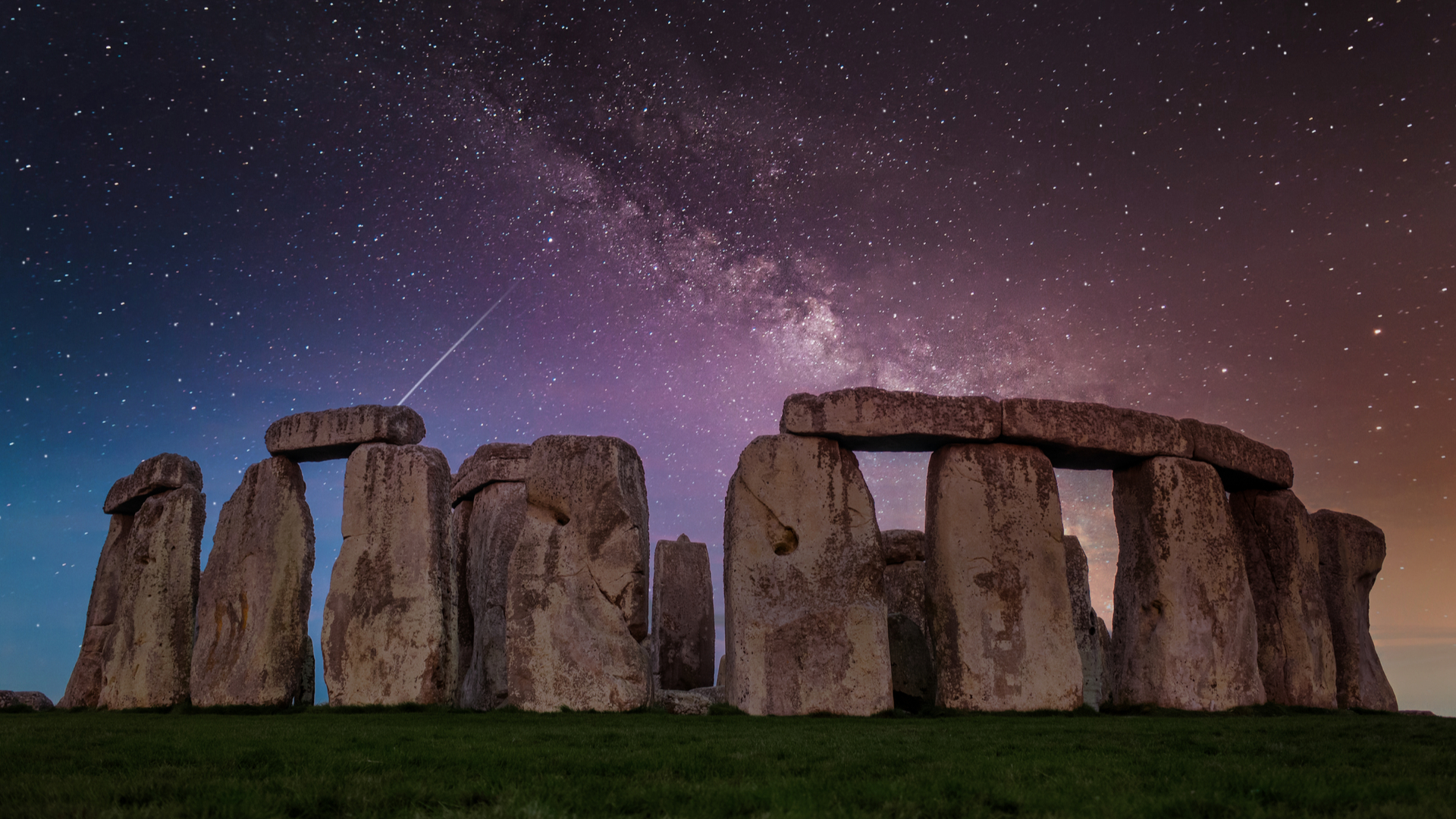How to photograph the Blue Moon, giant planets and Milky Way this weekend
Our guide to capturing the Moon and planets

Are you ready to capture a rare ‘Blue Moon’ with two giant planets, then your own home galaxy?
Both astrophotography and night-scape photography have boomed in recent years as camera sensors have gotten more sensitive and better at producing noise-free long exposure images using high ISOs. The pandemic has also caused a spike in interest in the night sky, with sales of telescopes skyrocketing.
There’s something interesting to photograph in the sky every night, but the weekend of August 21-22, in particular, will have photographers out in force if skies are clear. The following week or so just happens to be the start of one of the best 10-night periods to capture our Milky Way galaxy arcing across the sky, too.
Here’s everything you need to know about when and how to photograph a ‘Blue Moon’ on its own, alongside Saturn and Jupiter, as well as the Milky Way in the coming nights and weeks.

1. A ‘Blue Moon’ rising
When: Dusk on Saturday August 21 and Sunday August 22, 2021
Where to look: Southeast at dusk, southwest at dawn
At precisely 12:02 UTC on Sunday August 22 (that's 8:02am EDT / 1:02pm BST / 10.02pm AEST), the Moon will be totally lit by the Sun. There’s a full Moon every 29 days, but that means, occasionally, there are four in the same season. That happens this summer, with the third (after June’s ‘Strawberry Moon’ and July’s ‘Buck Moon’) traditionally called a ‘Blue Moon.’
Get daily insight, inspiration and deals in your inbox
Sign up for breaking news, reviews, opinion, top tech deals, and more.
So, it won’t actually be blue? No! That would require a large volcano to have recently exploded and the atmosphere to be filled with fine ash – as in 1883 – but if you catch it at precisely the right time, it will instead be a beautiful muted orange.
That time is, of course, the moment of moonrise, and this month there are two chances to catch it; dusk on Saturday August 21 and again on Sunday August 22. Check for the exact moonrise times for your location, but count on it being just after sunset on Saturday and about half an hour after sunset on Sunday.
Get into position before time and set-up a tripod and camera in manual mode wearing a 70-300mm telephoto lens. That way, you’ll get the full Moon rising into shot behind, above or between trees, buildings or rooftops. Lookout for orangey moonlight becoming visible on the horizon just before it appears, or use the PhotoPills app’s AR mode overlay to see exactly where it will rise in your environment.
Use ISO 200, an f/5.6 aperture and 1/250 sec shutter speed as a starting point. Manually focus, take some test shots, then tweak the aperture and shutter speed so get the correct exposure. The next ‘Blue Moon’ isn’t until 19 August, 2024, but this weekend also has a nice bonus...

2. A ‘Blue Moon’ alongside two giant planets
When: Friday, 20 August and Saturday, 21 August
Where to look: southeast, just above the ‘Blue Moon’ .
Look to the southeast after dark anytime this month and you’ll see both Saturn and Jupiter shining brightly. Both planets are at ‘opposition’ in August, which is when Earth is between them and the Sun.
That’s exactly the same situation as a full Moon, except it only happens once per year for planets. When a planet is close to opposition it rises at dusk and sets at dawn, is bigger and brighter than at any other time of the year, and its disk is fully-lit.
At dusk on Friday August 20 the almost-full ‘Blue Moon’ will be visible just four degrees below Saturn. Arguably the more arresting – and more easily photographed – event happens the following night when the ‘Blue Moon’ will have moved to be just four degrees to the lower-right of Jupiter. That’s because Jupiter is about 10 times brighter than Saturn.
The best shots, though, will be taken on Saturday, 21 August; zoom out slightly and you’ll be able to get a bright Jupiter alongside the ‘Blue Moon’, though you may have to wait until the Moon has risen slightly above the horizon before the planet becomes easily visible.

3. This year’s best ‘Milky Way window’
When: 90 minutes after sunset
Where to look: South
While the Moon is bright enough to be photographed from anywhere on Earth, that’s not true of the collective light from the 400 billion other stars in our galaxy, the Milky Way. Its bright centre is only easily visible from May through October, and most easily photographed during August and September when it’s conveniently positioned straight after dark.
So, it's ‘galaxy season’ right now! Imaging our galaxy’s arc across the night sky isn’t technically difficult, but you will need to be under a dark sky away from light pollution – and that includes the full Moon.
Wait until Tuesday August 31 and you’ll have dark, moon-less night skies until midnight; the Moon will rise slightly later each night to make the following week even better.

How to photograph the Milky Way
With a DSLR or mirrorless camera on a tripod, use as wide an angle a lens as you have (14mm or 16mm is ideal) and set your camera to record raw images. Manually focus your lens by pointing the dial to infinity (∞) and point it towards the south.
As a rule of thumb, you want to use a high ISO (ISO 800 for crop-sensor cameras, ISO 3200 or higher for full-frame), open the aperture as much as possible (say, f/2.8 or as low as it goes on your lens) and use a shutter speed of about 20-25 seconds. A shutter-release cable is also really helpful to reduce shake and blur.
Don’t be surprised if you see virtually nothing on images previewed on your camera’s LCD screen, because the magic comes in post-processing when you tweak parameters like contrast, exposure, clarity and luminance to make the galactic centre suddenly pop in brightness and color.
However, you can check your camera is at least picking-up the Milky Way while you’re outside by ramping-up the ISO to some horrendously-high number and taking a test shot (but remember to take it back down afterwards).
- These are the best photo editing apps you can download right now
Jamie is a freelance tech, travel and space journalist based in the UK. He’s been writing regularly for Techradar since it was launched in 2008 and also writes regularly for Forbes, The Telegraph, the South China Morning Post, Sky & Telescope and the Sky At Night magazine as well as other Future titles T3, Digital Camera World, All About Space and Space.com. He also edits two of his own websites, TravGear.com and WhenIsTheNextEclipse.com that reflect his obsession with travel gear and solar eclipse travel. He is the author of A Stargazing Program For Beginners (Springer, 2015),
